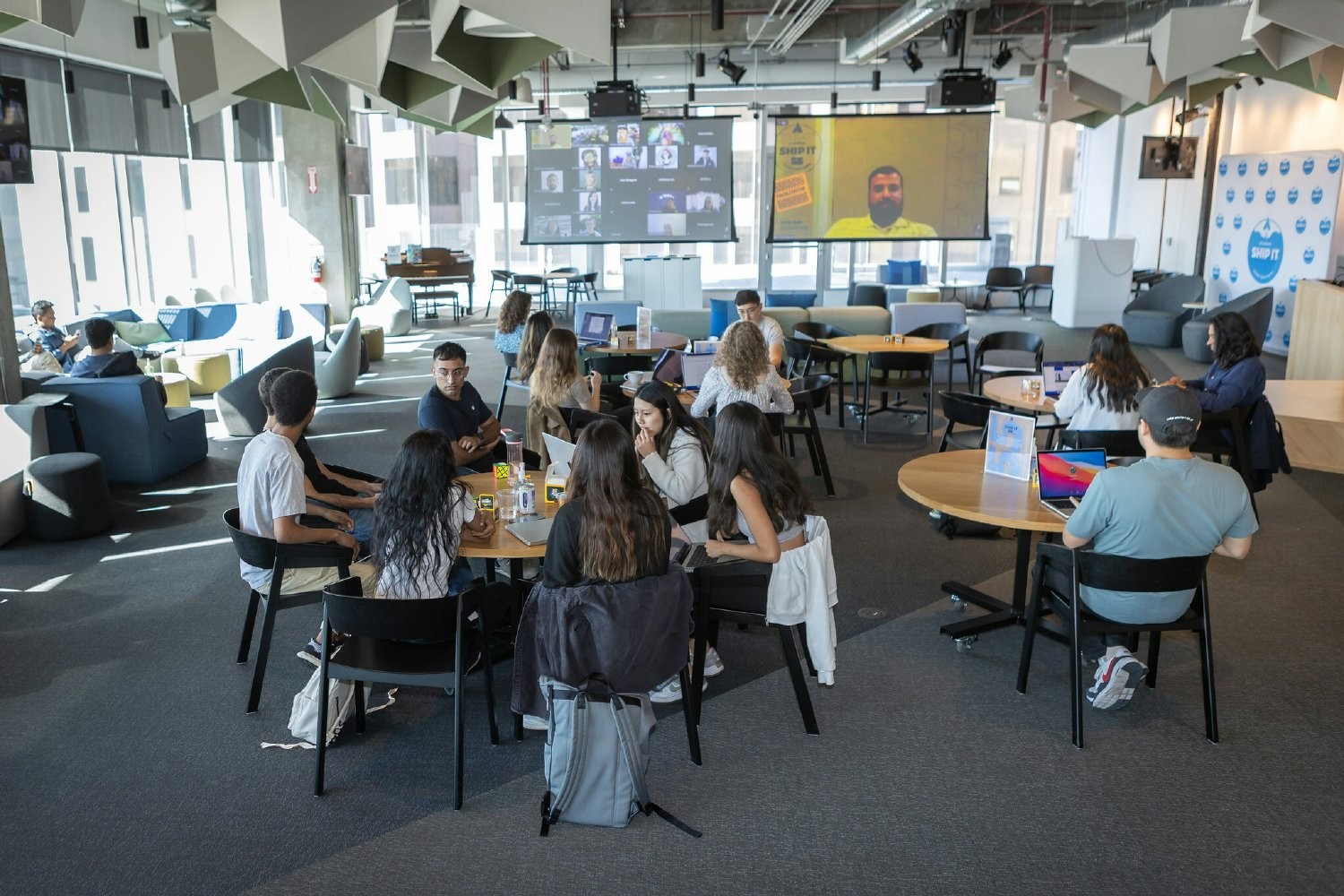Research shows that when employees can choose between remote, in-person, or hybrid work, they are more likely to want to stay and more likely to be engaged.
Remote work isn’t feasible for every organization — and many employees would prefer to go to a workplace every day.
A new report from Great Place To Work®, titled “Return-to-Office Mandates and the Future of Work” found that what really makes the difference for employees is the ability to choose where they work.
In a market survey of 4,400 employees, when employees were able to pick where they worked, they were:
- Three times more likely to want to stay with their organization
- 14 times less likely to “quit and stay”
- More likely to report giving extra effort on the job
- More likely to have a good relationship with their manager
So, how can companies create an environment that allows for this level of employee autonomy?
Here are tips from companies on the Fortune 100 Best Companies to Work For® List:
1. Get employee feedback from advisory groups
At Atlassian, work is oriented around time zones rather than offices. Employees must share similar working hours, maintaining a minimum of four hours of collaborative time with members of their team, but they are not required to go to an office to work.
Although employees can choose where they work, they’re expected to work in their chosen geographic location the majority of their time. They can spend up to 90 days working outside their permanent work time zone during the year.
Atlassian has made a commitment to offering a digital-first culture, with a default for virtual meetings and a greater emphasis on asynchronous communication. This ensures employees don’t feel they are at a disadvantage based on where they work.
To support their flexible work policies, Atlassian relies on its “Team Anywhere Advisory Squad,” a group of employes from different functions, geographics, roles, and tenure at the company. The squad provides feedback and counsel on the policies, ensuring employees have a voice in the decision-making process.
Tips and strategies for connecting employee experience to the bottom lineREPORT
How High-Trust Culture Drives Business Success
2. Provide more support to managers
At Cisco, teams are empowered to choose where they work to offer maximum flexibility to employees, while also meeting the needs of the business.
“People need flexibility and choice,” Kelly Jones, chief people officer, said on the "Better" podcast. “It’s crucial to employee engagement, particularly during times of change, which we’re all kind of living in all the time.”
More flexibility for employees can create complexity for managers, with more than 79% of first-line managers having at least one remote employee who reports to them.
To ensure managers can meet the challenge of hybrid work, Cisco created a “Hybrid Quick Start Guide” to help leaders develop policies, and norms for their teams. It also delivered team workshops to help teams figure out new ways to work productively and effectively in a hybrid environment.
Cisco also wanted to reinforce its culture, and rolled out “Collaboration Commitments,” which documented expectations and values for individual contributors, leaders, and teams navigating a hybrid work environment. The commitments specified expectations around accountability, inclusion and well-being, giving every leader a North Star to guide development of their team’s remote work policies.
3. Consider creative ways to offer flexibility
Many companies, particularly those with frontline employees, have never been able to offer remote or hybrid work. Retail employees were restocking shelves and serving customers throughout the heights of COVID.
Even with the rise of telehealth, health care providers admit that the in-person experience of health care is unlikely to change for the foreseeable future. Does that mean that companies in these industries simply can’t compete with companies that can offer remote work?
That’s not what the data shows.
Great Place To Work found that there were benefits for the typical U.S. employee when they could choose where they work. However, those experiences still fell short of how employees feel in high-trust workplaces, like the companies that made the Fortune 100 Best list.
Only 51% of employees at a typical U.S. workplace reported a psychological and emotionally healthy work environment when they could not choose where they work. That went up to 64% when employees could choose where to work, and rose even more to 83% when companies were Great Place To Work Certified™.
How are companies that aren’t an obvious fit for remote work offering a superior employee experience? By meeting the specific needs of their workers.
At Sheetz, a convenience store chain, scheduling was revamped to provide full-time management employees with a consistent schedule, two back-to-back days off, and flexibility around the beginning and ending of their shifts. For drivers, a consistent schedule and compressed workweek provide quality time at home — a rare and valuable perk for professional drivers.
At Atlantic Health System, scheduling models were revamped to align with what employees said mattered most. Many team members can self-schedule, choosing shifts that best fit their needs.
4. Make the office a meaningful experience
Some companies are looking to make the office more engaging to entice workers to come back to the office.
At Elevance, an event strategy offers associates the opportunity to participate in networking, in-person trainings, celebrations, and other activities. Called “PulsePoints,” these events are designed to reinforce connection between colleagues and highlight the deeper meaning in the work.
However, leaders must beware of launching a full social calendar that feels like a distraction to employees focused on meeting their goals. Elevance provides a toolkit to help develop team norms that provide the ideal balance of heads-down work time, meeting time, and space for creative thinking.
5. Always come back to the data
When communicating about changes to your remote work policies, it’s helpful to have employee survey data to inform your decision.
At Elevance, associate feedback revealed that many, particularly newer associates, were looking for mentorship and engagement opportunities that work best in an in-person environment. In response, Elevance asked associates to gather onsite weekly.
Making changes to remote work policies requires companies to be thoughtful in their approach and communication. You’ll likely get buy-in if your campaign is a response to what employees asked for in a survey.
Don’t survey employees to ask for input when you already know what action you are going to take. It’s best to approach the survey with curiosity and be willing to engage in good faith with what employees say they need to thrive.
Anything less is an exercise that will do more harm than good.
Download our report
Get research-backed insights for your industry by downloading our latest report "Return-to-Office Mandates and the Future of Work."
Transform culture into business success
Let our Great Place To Work® Model guide your culture to drive performance. Start your journey with Great Place To Work today.












